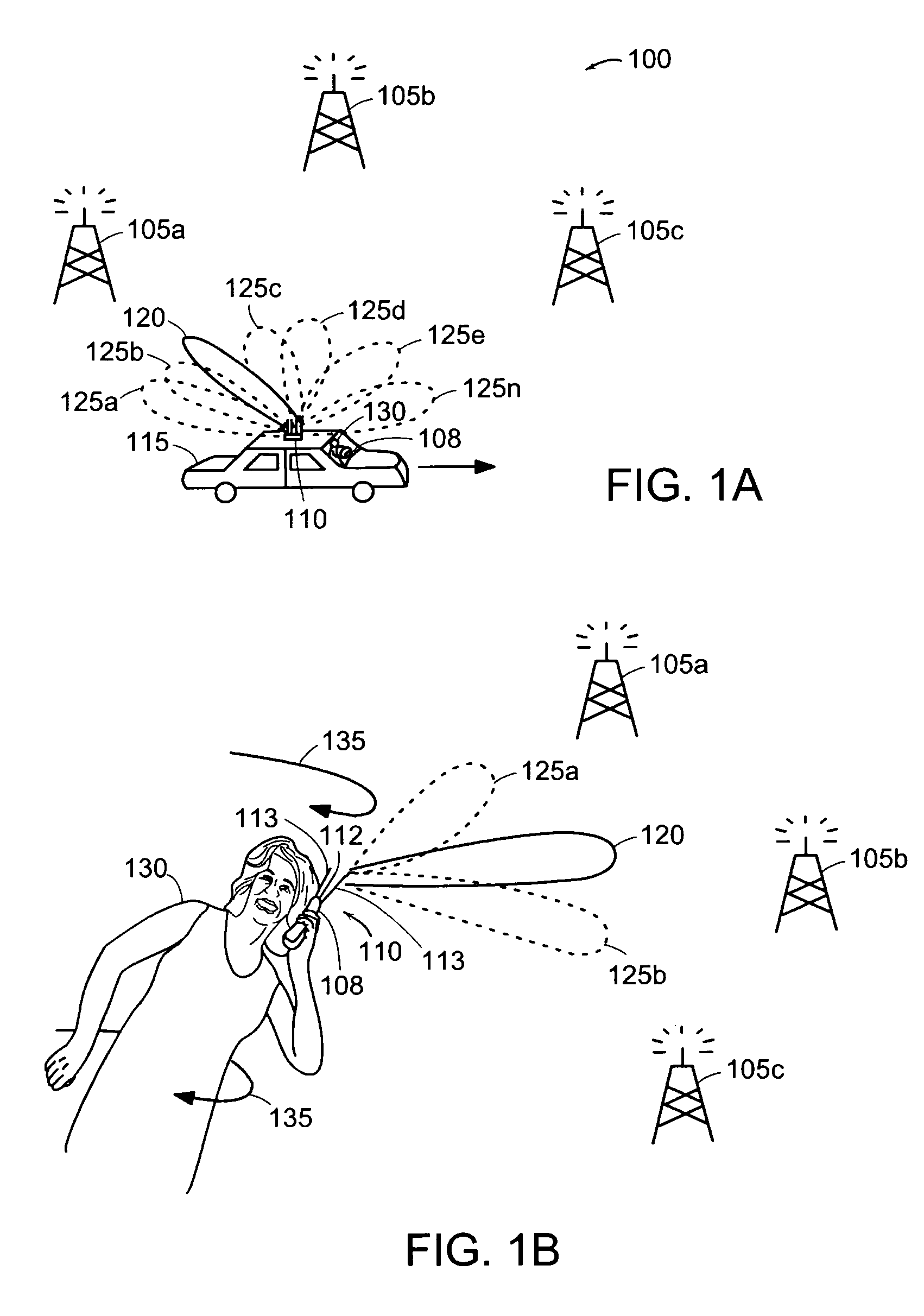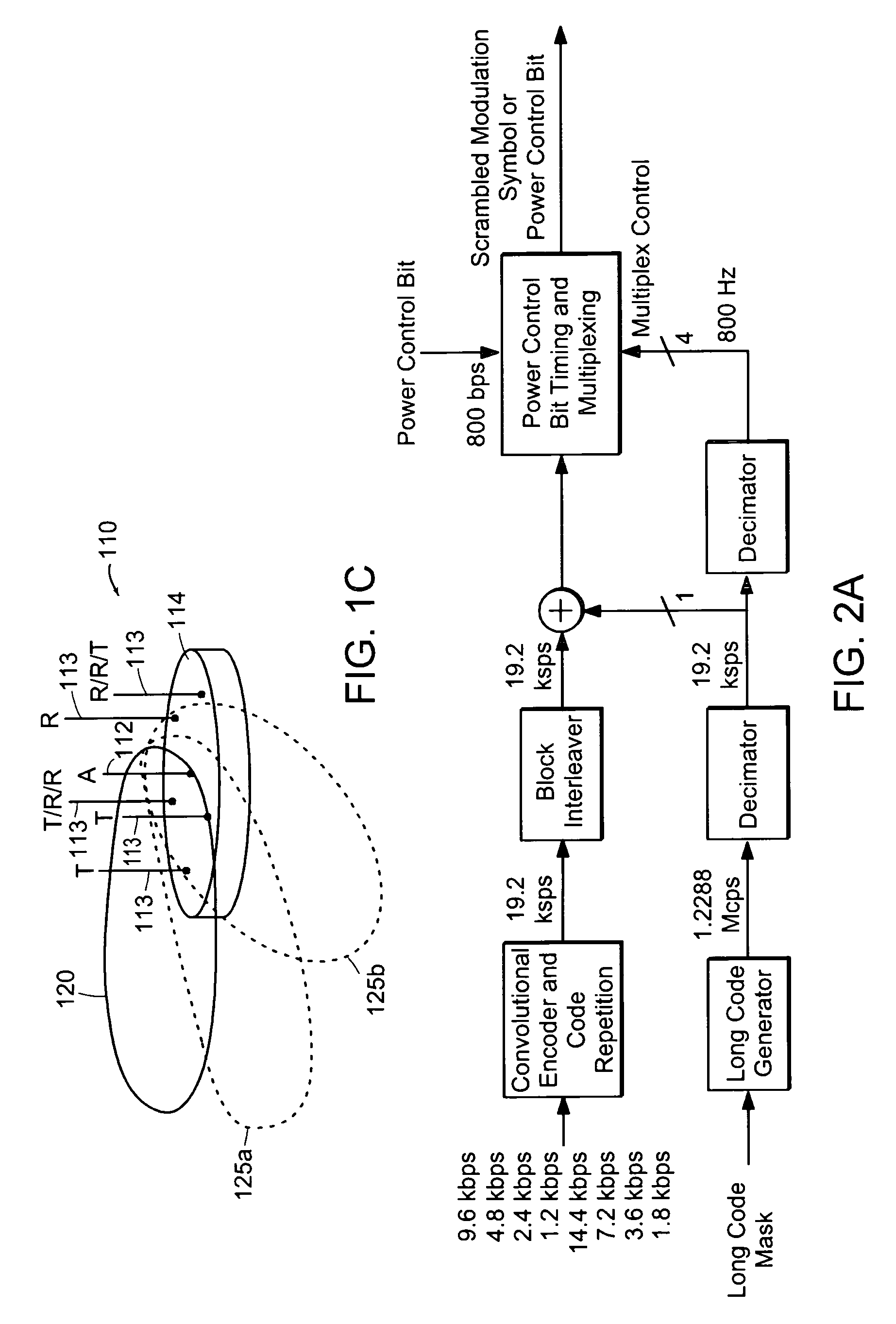Antenna adaptation comparison method for high mobility
a technology of directional antenna and high mobility, applied in the direction of polarisation/directional diversity, transmission monitoring, baseband system details, etc., can solve the problems of loss of signal strength between the field unit and the base station, problem may be more noticeable, and the gain provided by the directional antenna is quickly reduced, so as to minimize the effect of signal degradation and improve the performance of the field unit equipped
- Summary
- Abstract
- Description
- Claims
- Application Information
AI Technical Summary
Benefits of technology
Problems solved by technology
Method used
Image
Examples
Embodiment Construction
[0026]A description of preferred embodiments of the invention follows. A description of preferred embodiments of the invention follows.
[0027]FIG. 1 is a diagram of a wireless communications network 100 in which the present invention may be employed. The network 100 may be a Code Division Multiple Access (CDMA), Time Division Multiple Access (TDMA), Time Division Duplex (TDD), Frequency Division Duplex (FDD), WiFi, Wireless Local Area Network (WLAN), or other wireless network. The network 100 includes base stations 105a, 105b, 105c (collectively 105) and wireless communications field unit 108 having a directional antenna 110, such as described in U.S. Pat. No. 6,515,635 by Chiang et al. issued Feb. 4, 2003 or U.S. patent application Ser. No. 09 / 859,001 by Gothard et al., filed May 16, 2001 entitled “Adaptive Antenna for Use in Wireless Communication System,” and technique for optimizing the use of the directional antenna 110, such as described in U.S. patent application Ser. No. 09 / 7...
PUM
 Login to View More
Login to View More Abstract
Description
Claims
Application Information
 Login to View More
Login to View More - R&D
- Intellectual Property
- Life Sciences
- Materials
- Tech Scout
- Unparalleled Data Quality
- Higher Quality Content
- 60% Fewer Hallucinations
Browse by: Latest US Patents, China's latest patents, Technical Efficacy Thesaurus, Application Domain, Technology Topic, Popular Technical Reports.
© 2025 PatSnap. All rights reserved.Legal|Privacy policy|Modern Slavery Act Transparency Statement|Sitemap|About US| Contact US: help@patsnap.com



